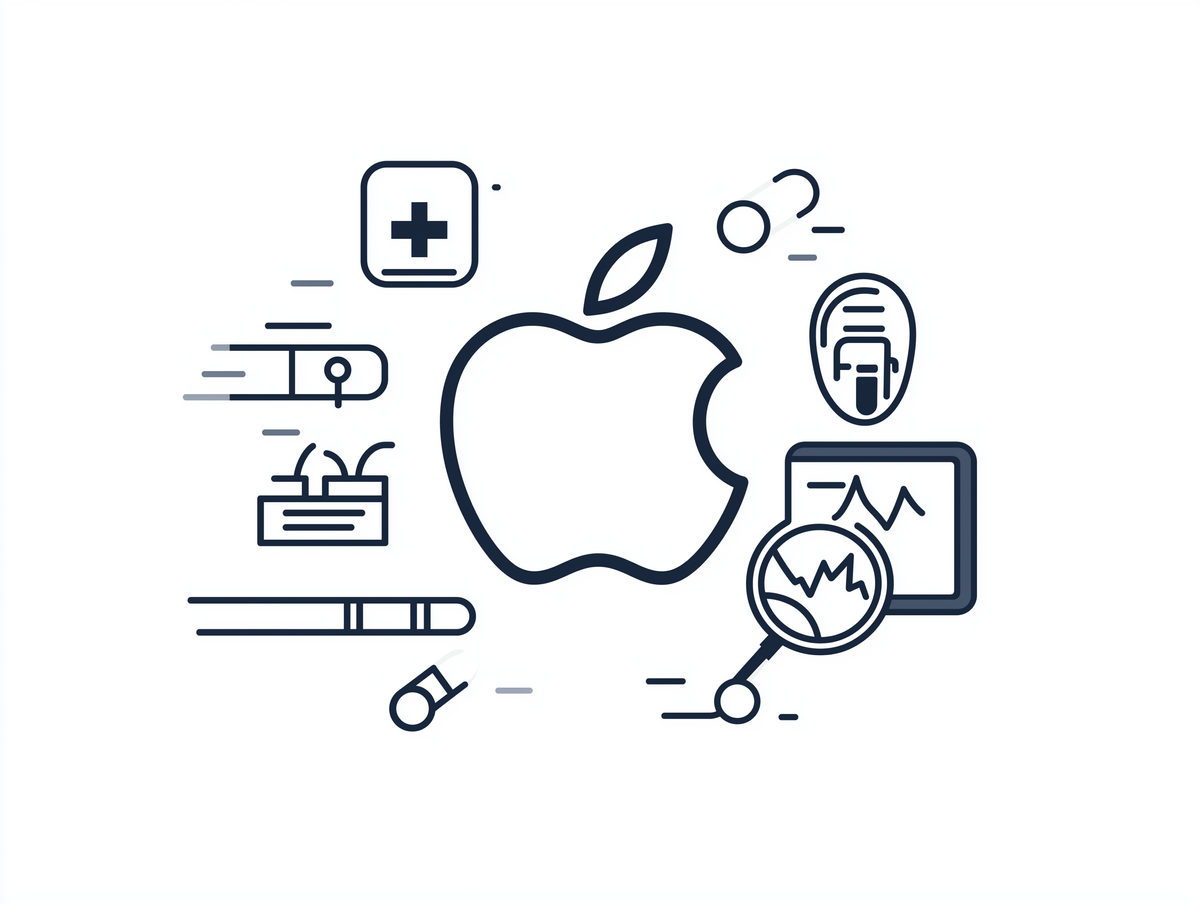Apple’s Push Into Health Tech and Its Big Moves in 2024

Apple recently dropped its latest fall lineup, and while most people are buzzing about AI, I want to talk about something just as important—if not more so. Health tech. Yes, AI is a massive part of Apple’s strategy, but health tech is where they’re truly pushing boundaries. Over the past few years, it’s been a consistent area of growth for them. And with the new updates, Apple’s vision for health tech is becoming crystal clear.
Apple’s Health Tech Focus
This year, Apple has doubled down on two major areas in the health space: the Apple Watch and AirPods. These two products are being shaped into essential tools for healthier living. Let’s start with the Apple Watch, which Apple has pretty much rebranded as a “device for a healthy life.” This isn’t just marketing fluff; it’s becoming a real, usable health tool.
Apple Watch: Now Targeting Sleep Apnea
The Apple Watch now comes with a new feature—sleep apnea detection. This is a big deal because sleep apnea is a serious, sometimes life-threatening condition that can go undetected for years. With the new Watch, people can monitor their sleep and catch signs of this condition early. Apple is positioning the Watch as more than just a fitness tracker; it’s a potential lifesaver.
Now, don’t get me wrong—there are features Apple has been working on but hasn’t released yet, like a blood pressure monitor. That’s a tricky technical problem to solve, and Apple tends to work on these challenges incrementally. They’re careful about rolling out health-related features, especially when regulatory approval, like from the FDA, is involved. For example, Apple had to wait to get approval before they could market their AirPods as a hearing aid.
AirPods: A Hearing Device, Not Just for Music
Speaking of AirPods, these are no longer just sleek little earbuds for listening to music. Apple is moving them into the health space too, turning them into hearing aids of sorts. They can now give you a hearing test and help you filter out certain noises. Picture being at a noisy restaurant and still being able to hear your friend across the table clearly while drowning out the background chatter. That’s huge for people with hearing loss. It’s likely that millions of people who might not go to an audiologist will be able to test and improve their hearing right from home. This can change a lot of daily interactions, especially for families with aging parents.
So, Apple’s push into health tech is not just about fancy new gadgets. They’re making health tools that could genuinely improve, and in some cases, save lives. This is a long-term play for them, and they’re leading the market in this space.
The iPhone: A Mandatory Upgrade?
Now, let’s move on to the iPhone, which is where most people’s attention naturally goes. The iPhone is still the anchor product for Apple. But this time, I think we’re seeing the first “must-have” upgrade in years. Why? Because many of the cool new features are simply not possible on older models.
One of the standout features is Apple’s visual intelligence search. You can now snap a picture of a café and the iPhone will tell you all about it. Or take a picture of a dog, and it will identify the breed. This kind of functionality has been teased before, but it wasn’t as robust as what we’re seeing now. And let’s not overlook the addition of a new button specifically for visual search—a rare move for Apple, which typically tries to eliminate buttons wherever possible. This suggests they see real value in this feature based on user testing.
The iPhone Camera: A Visual Powerhouse
Another big selling point is, as always, the camera. Apple has built its reputation on its iPhone cameras, but they’ve often been a step behind competitors when it comes to cutting-edge features like 4K video or advanced visual search capabilities. With this latest iPhone, Apple is finally catching up. Google, for instance, has been running ads for months showcasing its AI-powered camera features. Apple had to respond, and they’ve done so in their typical fashion: emphasizing how seamlessly their hardware and software work together.
Now, you’ll be able to search not just for images but for text within those images. Imagine going through your photo library and asking to see pictures of your dog climbing the stairs, and boom—there they are. This is AI working in the background to make your life easier, and it’s the kind of thing that makes the new iPhone truly stand out. But, to take full advantage of this, you’re going to need the latest hardware, meaning Apple has built-in reasons for people to upgrade.
Apple knows it needs to keep driving iPhone sales to maintain its profitability. So, limiting these new features to the latest iPhone models is a smart move. This forces people who want these capabilities to buy the new device, which should fuel a significant upgrade cycle over the next year.
AI and LLMs: Apple’s Cautious Approach
Finally, let’s talk about AI and large language models (LLMs). This is where things get really interesting. Apple’s taken a more measured approach to AI compared to companies like Google, which have been aggressively promoting their AI features. That said, Apple has the potential to roll out LLMs on a scale we haven’t seen yet.
With hundreds of millions of iPhones in the world, Apple could put AI-powered functionalities in the hands of people who have never used something like ChatGPT before. Imagine being able to summarize emails or write text messages with AI directly on your phone. It’s a massive opportunity for Apple to bring AI into the mainstream.
However, there’s a catch. Apple has been hyper-focused on privacy, and that could limit the functionality of their AI tools. In other words, while you’ll have AI on your phone, it may not be as smart or as capable as what you’d get from other AI tools like ChatGPT or Google’s Gemini. I’m really curious to see how this plays out—whether it becomes a feature people use daily or if, like Siri, it’s something people try once and forget about because it’s not quite smart enough to be useful.
The Bottom Line: A Strategic Year for Apple
To sum it up, Apple’s strategy this year revolves around three major areas: health tech, iPhone upgrades, and AI. Health tech is where they’re really innovating and setting themselves apart, especially with the Apple Watch and AirPods becoming more than just lifestyle gadgets. They’re now legitimate health devices that can have a real impact on people’s lives. The iPhone, meanwhile, is going to drive a major upgrade cycle, with new features that simply can’t be experienced on older models. And finally, while AI is a huge part of the conversation, Apple’s cautious approach means it may not have the immediate “wow” factor we’ve seen from other companies, but it could still change how millions of people interact with their devices.
Apple is making long-term bets here. They’re focusing on how their products can improve daily life—not just through flashy features but through meaningful, impactful technology. And while the headlines might focus on AI, don’t sleep on Apple’s health tech push. It’s going to be a game-changer.
So, where do we go from here? We’ll have to wait and see how these technologies are adopted by the public, but one thing is clear: Apple’s not just releasing products. They’re slowly reshaping how we live, work, and—most importantly—stay healthy. And that, more than any visual search or AI feature, might be the most lasting impact of all.





